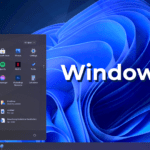
In order to enable the display of seconds in the Windows 10 and 11 taskbar clock, an option must be accessed in the settings. Microsoft points out that specifying seconds increases power consumption. The statement has now been verified.
While the second’s display could always be switched on in Windows 10, the Redmond-based company only brought the function back to Windows 11 with a current update. An option provided for this purpose appears in the “Taskbar” sub-item of the “Personalization” settings menu. Microsoft writes directly there that the second’s display leads to higher energy consumption.
Neowin took a closer look at the differences in energy consumption. An HP Pavilion x360 with a 14-inch display, an eleventh-generation i3 processor, and twelve gigabytes of RAM was used in the tests. While the brightness of the screen was set to maximum, the battery was initially fully charged and flight mode was activated. The operating system was freshly installed and only the stopwatch was running during the measurement. Each experiment was repeated three times.
While a difference of 1.892 percent in battery life was measured under Windows 11, there was a loss of 1.902 percent under Windows 10. The feature only has a minimal impact on consumption, so the difference should hardly be noticeable.
Research Snipers is currently covering all technology news including Google, Apple, Android, Xiaomi, Huawei, Samsung News, and More. Research Snipers has decade of experience in breaking technology news, covering latest trends in tech news, and recent developments.